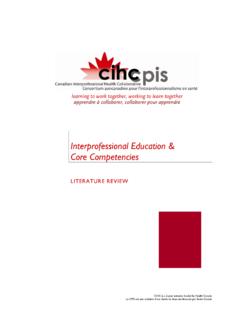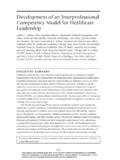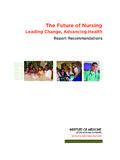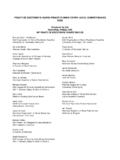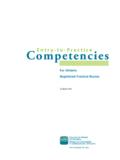Transcription of Quick NatioNal iNterprofessioNal CompeteNCy …
1 N at i oN a l i Nt e r p r o f e s s i oN a l Co m p e t eN Cy f r a m e w o r kthe CiHC NatioNal iNterprofessioNal CompeteNCy framework describes the competencies required for effective iNterprofessioNal collaboration. six CompeteNCy domains highlight the knowledge, skills, attitudes and values that together shape the judgments that are essential for iNterprofessioNal collaborative practice. these domains are:Patient/Client/Family/Community-Cent redCareLearners/practitionersseekout,int egrateandvalue,asapartner,theinputandthe engagementofpatient/client/family/ , Clari cationLearners/practitioners understand theirown role and the roles of those inother professions, and use thisknowledge appropriately toestablish and meet patient/client/ family and community ict ResolutionLearners/practitioners activelyengage self and others,including the patient/client/family, in dealing e ectively with interprofessionalcon FunctioningLearners/practitioners understandthe principles of team dynamicsand group processes to enablee ective interprofessionalteam LeadershipLearners and practitioners work together with all participants,including patients/clients/families, to formulate, implement andevaluate care/services to enhance health.
2 InterprofessionalCollaborationA partnership between a team of health providers and a client in a participatory, collaborative and coordinated approach toshared decision-making around health and social issuesContextualIssuesSimpleComplex ContextualIssuesQuality ImprovementQuality Improvementrole Clarificationteam functioningpatient/Client/family/Communi ty-Centred Care Collaborative leadershipinterprofessional Communication iNterprofessioNal Conflict resolution the following diagram represents the configuration of the six domains and highlights three background considerations that influence how the CompeteNCy framework may be applied in different situations. Quick Reference GuideiiA NatioNal iNterprofessioNal CompeteNCy FrameworkQuick Reference Guide Role Clarificationlearners/practitioners understand their own role and the roles of those in other professions, and use this knowledge appropriately to establish and achieve patient/client/family and community goals.
3 To support iNterprofessioNal collaborative practice, learners/practitioners are able to:describe their own role and that of othersrecognize and respect the diversity of other health and social care roles, responsibilities, and competenciesperform their own roles in a culturally respectful waycommunicate roles, knowledge, skills, and attitudes using appropriate language access others skills and knowledge appropriately through consultation consider the roles of others in determining their own professional and iNterprofessioNal rolesintegrate competencies/roles seamlessly into models of service deliveryPatient/Client/Family/Community- Centred Carelearners/practitioners seek out, integrate and value, as a partner, the input, and the engagement of the patient/client/family/community in designing and implementing care/services. to support inter-professional collaborative practice that is patient/client/family-centred, learners/practitioners need to: support the participation of patients/clients, their families, and/or community representatives as integral partners alongside with healthcare personnel share information with patients/clients (or family and community) in a respectful manner and in such a way that it is understandable, encourages discussion, and enhances participation in decision-makingensure that appropriate education and support is provided to patients/clients, family members and others involved with care or servicelisten respectfully to the expressed needs of all parties in shaping and delivering care or servicesTeam Functioninglearners/practitioners understand the principles of team work dynamics and group/team processes to enable effective iNterprofessioNal collaboration.
4 To support iNterprofessioNal collaboration, learners/practitioners are able to:understand the process of team developmentdevelop a set of principles for working together that respects the ethical values of memberseffectively facilitate discussions and interactions among team membersparticipate, and be respectful of all members participation, in collaborative decision-makingregularly reflect on their functioning with team learners/practitioners and patients/clients/families iiiA NatioNal iNterprofessioNal CompeteNCy FrameworkQuick Reference Guideestablish and maintain effective and healthy working relationships with learners/practitioners, patients/clients, and families, whether or not a formalized team existsrespect team ethics, including confidentiality, resource allocation, and professionalismCollaborative Leadership learners/practitioners understand and can apply leadership principles that support a collaborative practice model.
5 This domain supports shared decision-making as well as leadership but it also implies continued individual accountability for one s own actions, responsibilities and roles as explicitly defined within one s professional/disciplinary scope of practice. to support iNterprofessioNal collaborative practice, learners/practitioners collaboratively determine who will provide group leadership in any given situation by supporting:work with others to enable effective patient/client outcomesadvancement of interdependent working relationships among all participantsfacilitation of effective team processesfacilitation of effective decision making establishment of a climate for collaborative practice among all participantsco-creation of a climate for shared leadership and collaborative practiceapplication of collaborative decision-making principlesintegration of the principles of continuous quality improvement to work processes and outcomes iNterprofessioNal Communicationlearners/practitioners from different professions communicate with each other in a collaborative, responsive and responsible manner.
6 To support iNterprofessioNal collaborative practice, learners/practitioners are able to:establish team work communication principlesactively listen to other team members including patients/clients/familiescommunicate to ensure common understanding of care decisionsdevelop trusting relationships with patients/clients/families and other team memberseffectively use information and communication technology to improve iNterprofessioNal patient/client/community-centred careInterprofessional Conflict Resolutionlearners/practitioners actively engage self and others, including the client/patient/family, in positively and constructively addressing disagreements as they arise. to support iNterprofessioNal collaborative practice, team members consistently address conflict in a constructive manner by: valuing the potential positive nature of conflictrecognizing the potential for conflict to occur and taking constructive steps to address it iVA NatioNal iNterprofessioNal CompeteNCy FrameworkQuick Reference Guideidentifying common situations that are likely to lead to disagreements or conflicts, including role ambiguity, power gradients, and differences in goalsknowing and understanding strategies to deal with conflictsetting guidelines for addressing disagreementseffectively working to address and resolve disagreements, including analyzing the causes of conflict and working to reach an acceptable solutionestablishing a safe environment in which to express diverse opinionsdeveloping a level of consensus among those with differing views.
7 Allowing all members to feel their viewpoints have been heard no matter what the outcomeB a C k G r oU N D Co N s iD e r at i oN sUnderpinning the framework are three considerations that influence the way in which the framework is applied. Complexityinterprofessional collaboration approaches may differ along a continuum from simple to complex. for example, a recreational runner with a sprained ankle may only need to see one or two health care providers and the impact of the injury on the individual s life is minor. However, a sprained ankle for a key member of the NatioNal soccer team can have a significant impact on the person s life and will likely require a team of health care providers, including a sports psychologist before the player is game ready . a sprained ankle for a single mother with an infant and a toddler, who also has multiple health concerns and limited social support while living in a third floor apartment with no elevator, is considerably more complex.
8 The team may need to become intersectoral in order to also address her transportation, income security and childcare Issues in specific areas of practice such as rehabilitation, residential care, and paediatric care, the CompeteNCy framework is used in support of a comprehensive and consistent team. However, in an emergency Unit or a high turnover acute medical unit, health care providers may work together only for a short period of time before shifts change and patients are discharged. in a community setting where a family has a disabled child there is a need to integrate beyond traditional providers to teachers in education settings and community health. in addition, the capacity of an individual to demonstrate the integration of these competencies in different contexts is a reflection of their comfort level and skill set within the practice settingQuality ImprovementBy working together across professions and across institutional roles, improvement activities carried out by iNterprofessioNal teams, rather than individuals or uniprofessional teams, more effectively address quality issues, especially in complex systems.
9 By working together across professions and across institutional roles, improvement activities can effectively address issues in any context of practice at any point along the continuum of simple to complex. please visit to view the full NatioNal CompeteNCy framework document.


